Viable Option
Ford finally succeeds in making a four-cylinder Mustang worth considering
By Tom Wilson
Photos by Steve Turner, Tom Wilson, and courtesy of Ford Motor Company
For the traditional Mustang performance faithful there’s no question the GT is the only way to squeal a tire, but boy was our curiosity piqued by the time we finally got to slide behind the wheel of a EcoBoost 2.3-liter Mustang. We’ve enjoyed Ford’s combination of turbocharging, direct fuel injection, and variable cam timing in everything from the 1.0-liter Fiesta to the 3.5-liter F-150. How it would impress as a 2.3-liter in the new Mustang was fraught with variables for foregone conclusions.
Now that we’ve driven it, we must say the new 2.3 is such a new sort of Mustang that foregone conclusions are still not possible!

Our first try was in what should be our winner, an EcoBoost Premium with the Performance Pack and a manual trans. The 3.55 gears certainly helped, but darn if physics says a turbo at rest tends to remain at rest until acted upon by the driver’s right foot. Ford has moved mountains to eliminate turbo lag for all practical purposes, but from a dead stop there’s still a boost-less beat during the feather-light clutch engagement. That means a moment of driver technique is required to get the manual EcoBoost away from the wharf.
After that, it’s all fun. Turbo lag is non-existent, as with all other EcoBoost engines, so even in on-off-on throttle jockeying between corners on a tightly wound road throttle precision and response is absolutely primo. Ford has worked wonders with the entire EcoBoost line, and the 2.3 continues the trend with faultless throttle response underway.

Power is also good. Previous four-cylinder Mustangs were hopeless as performance cars, and even the celebrated performance-edition SVO Mustang had a truncated three-year run thanks to a torque-deficient output and paint-shaker personality. So the fact we’re seriously discussing a four-pot Mustang (especially one weighing 3,530 pounds) as an enthusiast’s ride is a trip.
With 310 horsepower and 320 lb-ft of torque standing butte-like across the tach there’s real giddy-up here. Not the stuff of musclecar legend, and for sure not enough for the power jaded. But for a fun daily driver there’s definitely a rheostat of smooth power for your twisting pleasure.

Of course, turbo or not, it takes a bit of rpm to realize the 2.3’s performance potential. For good, old missionary-position acceleration that’s a no-brainer, but when hustling on twisting back roads expect to be in the right gear and let her rip a bit to get what’s coming to you. Also realize that in socially conscious backcountry touring and sport driving the 2.3 is realistically as fast as a 5.0. You’ll just wing the 2.3 higher to keep things moving and you won’t have the 5.0’s heavy hit either off the line or way up there at felony-fast speeds.
One of the biggest differences between the 5.0 and the 2.3 is engine noise. The 5.0 rips the familiar V-8 theme; the 2.3 has been laboriously tuned to banish the dreaded four-cylinder boom (including active noise canceling using the sound system), leaving something a bit industrial in your ears. Pushed hard there’s a fun, higher-pitch tear in the muted-to-legal-standards factory exhaust, but it’s more mechanical noise than anything else. So while a 5.0 can make speed on the sly if you’re smooth, hustling a 2.3 is a can’t-miss-it experience to anyone inside the car.

Then we tried a 2.3 EcoBoost Mustang without the Performance Pack and with an automatic transmission. We expected ho-hum, but we were dead wrong.
Suddenly the 2.3’s major asset—a flat, oomphy mound of torque—was a perfect fit for the transmission. Just put your foot down and she goes, and goes! The electronic nannies allow a squeak of tire spin when aggressively hitting the throttle, and with traction control switched off—and praise be there’s a dedicated toggle switch for just that duty—the 2.3 has the stuff to light ’em up with the drop of the hammer. Shifting is quick, smooth and intelligent, and toss in the paddle shifters for total control over all six gears and all needs are answered. Definitely consider the automatic with the 2.3.

Another consideration for daily use is the ride. We might be getting old, but we definitely enjoyed the standard suspension more on Los Angeles’ bumpy surface streets. The Performance Pack’s GT-spec spring, shock and sway bar tune is livable in daily duty, but the standard suspension is actually nice around town. Here the promise of a smooth riding IRS rear suspension is delivered, and the stiffer chassis’s civilized temperament more fully realized. It is civilized and still quick to deliver bursts of speed.
As expected, handling is superb—a big step up from 2014. The double-ball-joint front end is the main player here, blessing the S550 with front-end grip and stability previous Mustangs but dreamed of. There’s but a breath of understeer all the way to the limit and when the end comes, the chassis, suspension, and tires progressively give up in synchronized unity. The IRS doesn’t hurt, either. The rear ultimately yields to physics gracefully, which is sublime should you have the power on and the rearend seductively slips into something more neutral on fast sweepers. We’ve been scribbling about Mustangs for 27 years, and along with the late Boss 302 this is the Mustang chassis we’ve been praying for. Happy days, these.

Much has been made of the 2.3’s reduced front-end weight and how that must translate into more balanced moves than the GT, but not so. No doubt protecting the 5.0’s top-dog status, the 2.3, even in Performance Pack trim, wears spring, shock and bar tuning calibrated for a touch more body roll, brake dive, and understeer than a PP GT. The difference is subtle and most drivers can’t discern the difference (especially without back-to-back test drives), but don’t be surprised when you can’t surprise 5.0s on track day in your “lightweight†2.3. It’ll take aftermarket suspension tuning to capitalize on the 2.3’s inherently better balance.
Ultimately, if you’re a V-8 diehard only a V-8 will do and damn the gas mileage. If you’re more open to try different performance flavors the 2.3 is going to satisfy from a pure power standpoint and be noticeably friendlier on the wallet. Ford is adamant the 2.3 EcoBoost Mustang is going to appeal to a new demographic of buyer, people naturally tuned to four-cylinder performance. We’re hopeful in this regard, too, but even with its need to rev a little more than the 5.0, the 2.3 personality is far more torquey and muscular than that crowd’s usual Honda Civic fare.
We’ll let the market decide this one, as the Mustang takes its more refined self on worldwide tour. In the meantime you definitely want to try a 2.3. It’s a new kind of Mustang, but it’s certainly a Mustang.


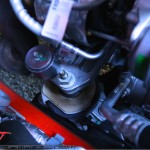
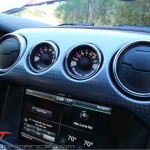
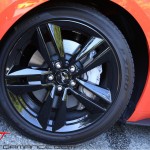
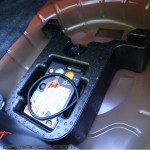
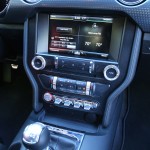
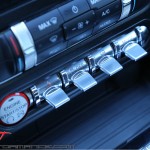

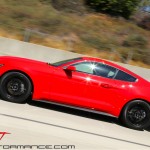
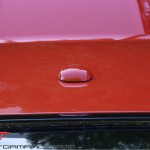
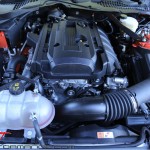

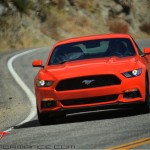
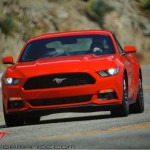


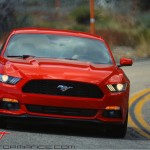
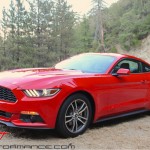
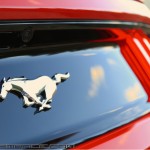
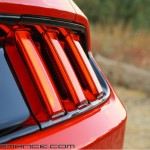
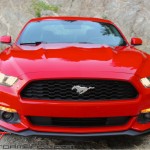
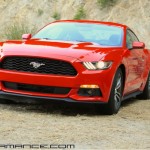



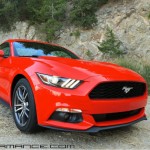

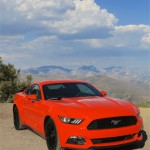
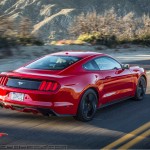
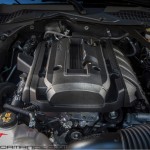
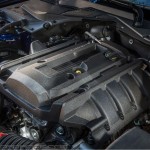
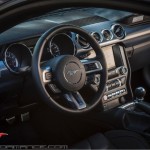
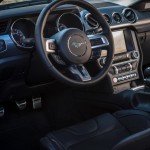


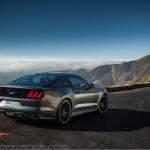


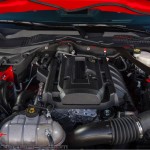



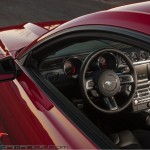


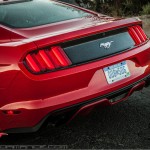
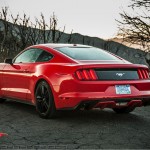
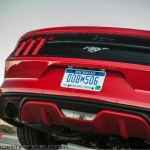
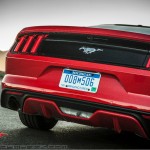
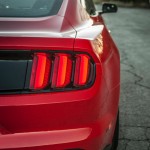
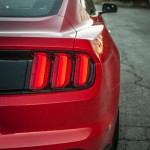
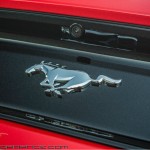
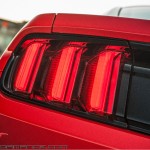
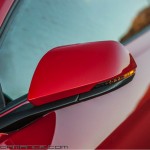
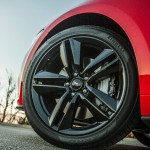
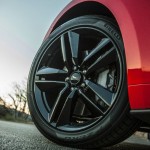





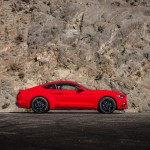
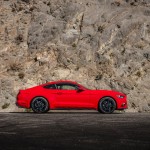
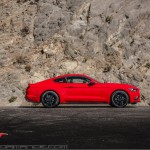
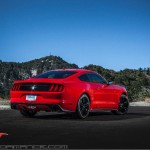
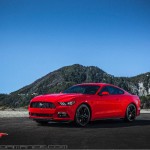
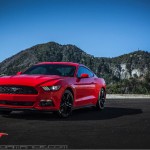
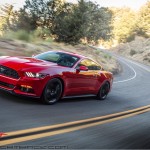

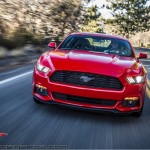
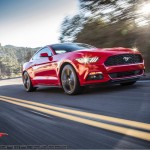
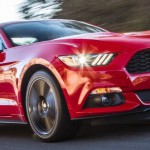

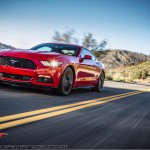
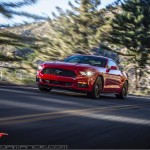
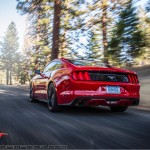
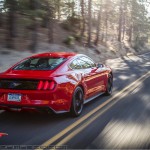
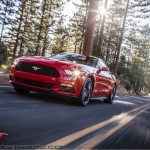
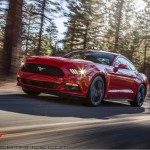
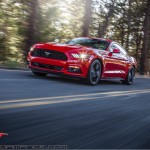
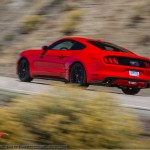
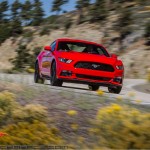
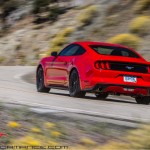

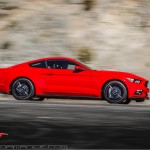
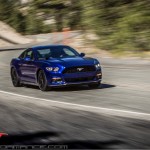

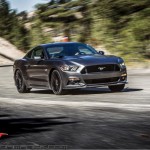
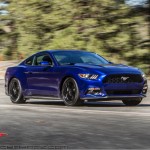
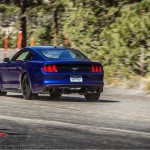

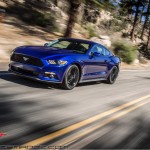
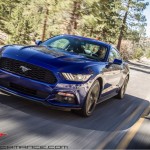
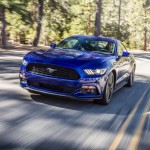
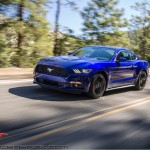
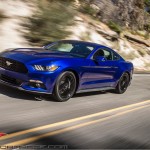
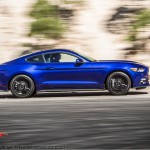
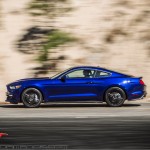
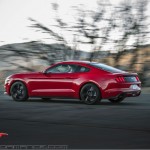

Great article Tom.
x999